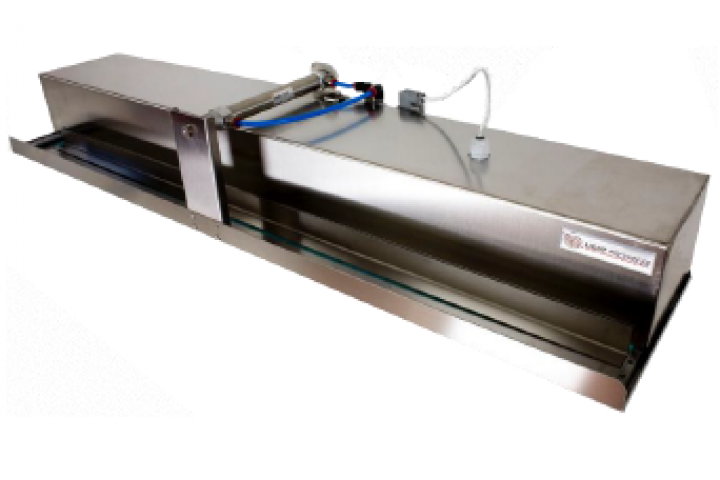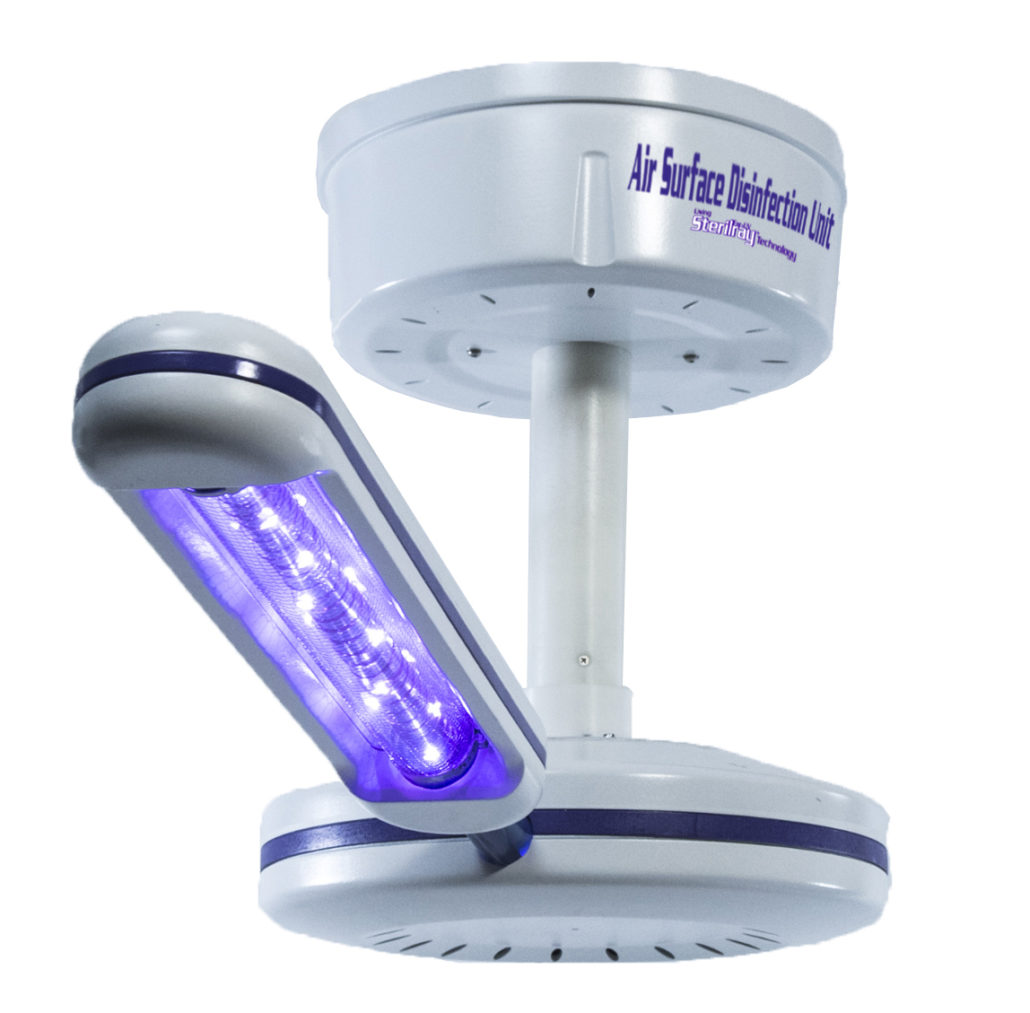UV Surface Disinfection Made Simple: Executing Finest Practices for Ideal Results
UV Surface Disinfection Made Simple: Executing Finest Practices for Ideal Results
Blog Article
Unveiling the Perks of UV Disinfection: Ensuring Clean and Sanitized Spaces
In the age of increased understanding bordering health and cleanliness, the significance of effective disinfection approaches can not be overstated. While standard cleansing approaches have actually long been relied upon, improvements in modern technology have introduced a cutting-edge option that makes certain clean and sanitized areas: UV sanitation. By using the power of ultraviolet light, this technique has obtained recognition for its capability to get rid of dangerous virus and provide a detailed sanitization procedure. The benefits of UV disinfection extend far past its efficacy. This discussion will certainly check out the scientific research behind UV disinfection, its efficiency on different microorganisms, its applications in various setups, and the advantages it holds over standard methods. In addition, we will look into the safety and security considerations that must be taken right into account when implementing UV sanitation. Prepare to uncover a new dimension of cleanliness and find the untapped potential of UV sanitation.

The Science Behind UV Disinfection
UV disinfection is a medically tried and tested method that makes use of ultraviolet light to get rid of dangerous microbes from surfaces and water. The scientific research behind UV disinfection lies in the ability of UV-C light to damage the DNA and RNA of bacteria, making them incapable to reproduce and creating their ultimate death. UV-C light falls within the wavelength series of 200 to 280 nanometers, which is highly efficient in damaging microorganisms, viruses, and various other virus.
When subjected to UV-C light, the genetic material of bacteria absorbs the energy from the light, bring about the formation of thymine dimers. These dimers disrupt the typical replication and transcription procedures of the bacteria, inhibiting their ability to recreate and survive (uv surface disinfection). The DNA and RNA damages brought on by UV-C light is deadly to the microbes, making UV sanitation a reputable and efficient technique for eliminating a wide range of pathogens
UV disinfection is especially useful in atmospheres where typical chemical disinfectants might be ineffective or unwise. It is a non-chemical method that does not leave any deposits or hazardous by-products, making it safe for usage in food processing, health care centers, water therapy plants, and various other markets. UV sanitation is eco pleasant, as it does not add to the advancement of antibiotic-resistant microorganisms or various other harmful toxins.
Performance of UV Disinfection on Virus
The performance of UV disinfection in getting rid of pathogens has been thoroughly researched and verified in many scientific studies. UV radiation has the ability to inactivate a vast array of microbes, consisting of fungis, viruses, and bacteria, by harming their DNA or RNA. This prevents them from reproducing and triggering infections.
One research released in the American Journal of Infection Control discovered that UV disinfection worked in reducing the existence of numerous drug-resistant bacteria in hospital spaces. Another study carried out by the National Institute for Occupational Safety and Health and wellness demonstrated that UV disinfection had the ability to remove 99.9% of the influenza virus on surface areas.
UV sanitation has actually also shown pledge in combating the spread of healthcare-associated infections (HAIs) According to a research published in The Lancet, using UV-C light along with basic cleaning procedures considerably reduced the occurrence of HAIs in a medical facility setting.
In addition, UV disinfection has shown to be effective against emerging virus, such as the serious acute respiratory disorder coronavirus 2 (SARS-CoV-2), which creates COVID-19. A research carried out by the National Arising Contagious Conditions Laboratories showed that UV-C light can suspend the virus on surfaces within seconds.
Applications of UV Disinfection in Various Settings
With its tried and tested efficiency in removing virus, UV disinfection has found applications in a variety of settings. UV disinfection is also valuable in water treatment plants, where it is made use of to kill unsafe bacteria and offer risk-free drinking water.
An additional vital application of UV disinfection impends purification sector. UV air purifiers are made use of in household, commercial, and industrial settings to remove air-borne bacteria, viruses, and mold spores. This innovation is especially useful in settings where people are much more prone to breathing infections, such as medical facilities, institutions, and workplace buildings.
Moreover, UV disinfection is use this link increasingly being made use of in public transport systems, such as buses and trains, to keep clean and sterilized rooms for passengers. UV light is employed to decontaminate surfaces and air inside the vehicles, lowering the threat of spreading out transmittable conditions.
Advantages of UV Sanitation Over Typical Methods
In contrast to typical methods, UV disinfection provides a variety of distinct advantages that make it a more suitable option in various industries and settings. One significant advantage is its efficiency versus a wide selection of microorganisms, including viruses, fungi, and microorganisms. Unlike chemical disinfectants that may have limited efficiency versus specific pathogens, UV disinfection is a non-selective process that can eliminate or suspend a broad range of damaging organisms.
An additional advantage of UV sanitation is its capability to give effective and quick sanitation. Conventional disinfection approaches typically call for longer call times or multiple actions to achieve the wanted degree of disinfection. On the other hand, UV light can provide continual and prompt disinfection, decreasing downtime and boosting productivity in various applications.
UV disinfection additionally provides a ecologically pleasant and risk-free alternative to traditional sanitation techniques. uv surface disinfection. Unlike chemical agents, UV light does not leave behind any type of dangerous residues or by-products, making it appropriate for usage in sensitive atmospheres such as food handling facilities, medical care settings, and water therapy plants
Additionally, UV sanitation is an affordable option in the long run. While the upfront investment for anonymous UV sanitation systems may be higher than typical approaches, the operational prices are typically reduced. UV lights have a long life expectancy and require very little maintenance, leading to lowered labor and substitute costs.
Safety And Security Considerations for UV Sanitation
Considering the prospective threats linked with UV disinfection, it is necessary to address the safety and security factors to consider involved in executing this modern technology. UV sanitation utilizes ultraviolet light to eliminate or suspend microorganisms, making it an efficient approach for sanitizing various surface areas and objects. Nevertheless, it is essential to understand that UV radiation can likewise present dangers to human health and wellness if proper safety and security steps are not followed.
Firstly, straight exposure to UV radiation can trigger damage to the skin and eyes. Prolonged direct exposure can cause sunburn, skin damages, and even a raised threat of establishing skin cancer cells. It is important to ensure that UV disinfection systems are effectively enclosed and outfitted with security features such as automatic shut-off devices or activity sensors to avoid unintentional exposure.

In addition, correct training and education are essential for those liable for operating UV disinfection systems. They should know the possible hazards, comprehend the security protocols, and understand just how to deal with and maintain the tools properly.
Verdict
In final thought, UV sanitation provides many benefits in making sure tidy and sterilized rooms. Its effectiveness in getting rid of pathogens has been confirmed through scientific study. UV disinfection can be used in different settings, consisting of medical care facilities, food processing plants, and water therapy systems. Contrasted to conventional approaches, UV sanitation has advantages such as faster disinfection times, very little chemical use, and no damaging results. Safety and security considerations need to be taken into account to stop possible risks connected with UV exposure.
UV disinfection is a clinically tried and tested technique that utilizes ultraviolet light to remove damaging microorganisms from surface areas and water. The DNA and RNA damages triggered by UV-C light is dangerous to the microorganisms, making UV disinfection a reliable and This Site reputable technique for eliminating a broad variety of microorganisms.
An additional advantage of UV sanitation is its capacity to give effective and rapid disinfection. UV sanitation uses ultraviolet light to eliminate or suspend microorganisms, making it an efficient technique for sterilizing different surface areas and items. Compared to conventional methods, UV disinfection has advantages such as faster disinfection times, minimal chemical usage, and no unsafe byproducts.
Report this page